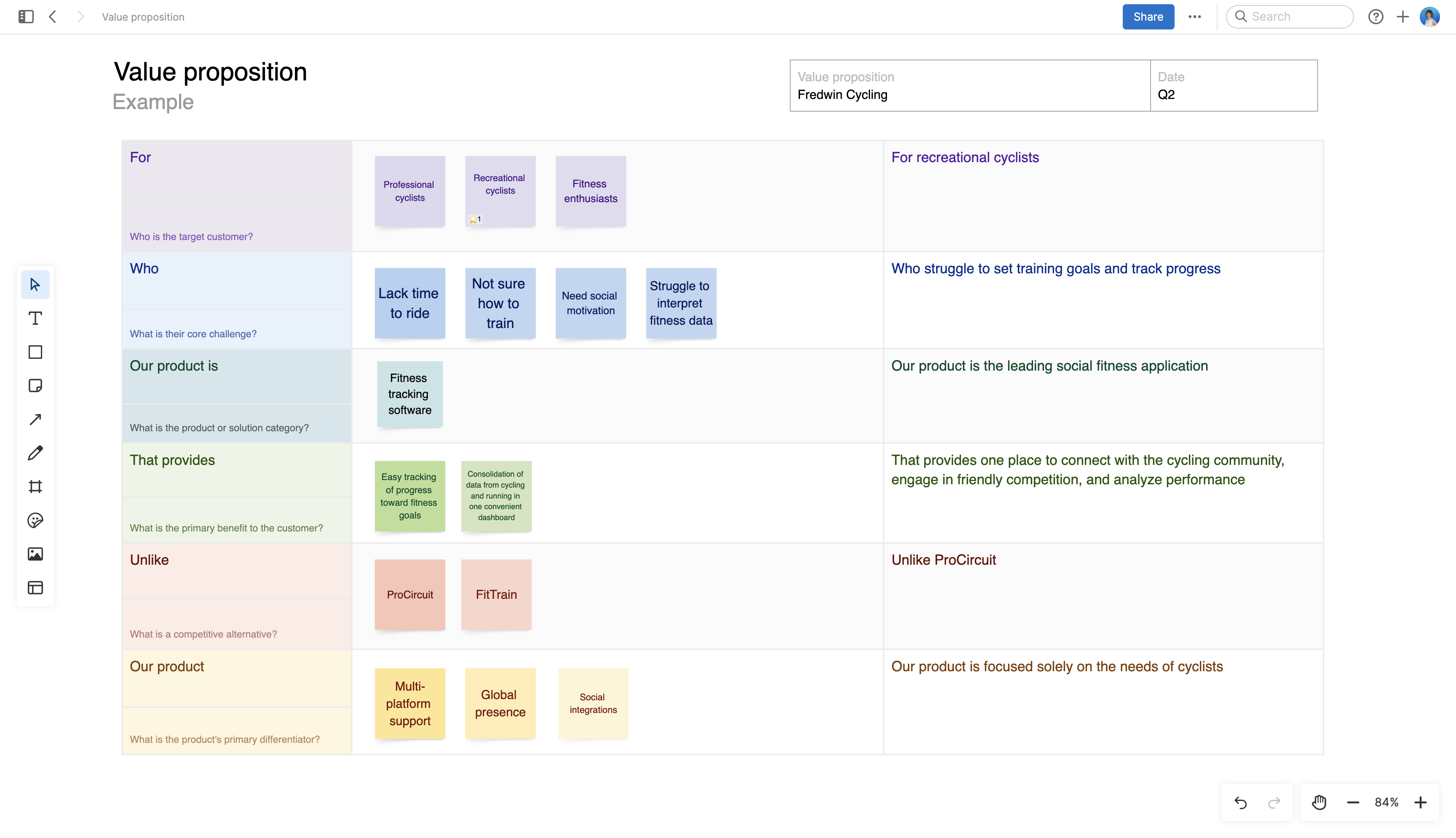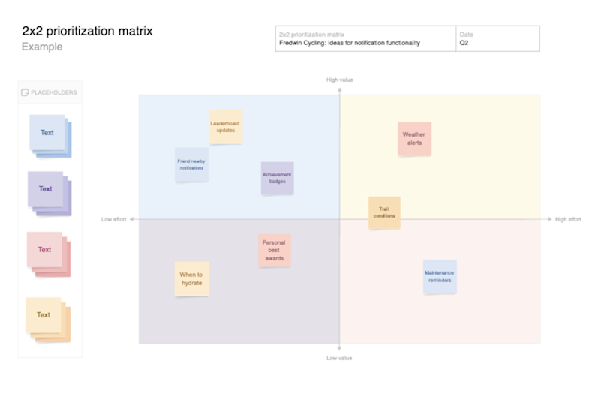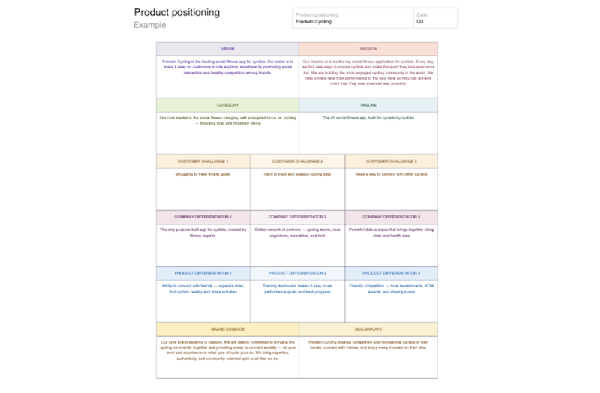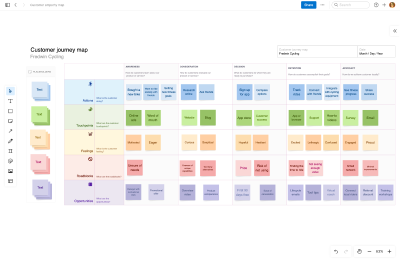What is product value?
Product value is an aggregate of all the work that a company does to strategize, build, launch, market, sell, and support an offering. Teams that follow value-based product development create a shared definition of product value that informs the metrics used to vet what gets built and understand performance.
Product value measures how well what you build serves business goals and delivers what customers need.
Think about how you determine the true value of a product. You might think it is the monetary amount that customers are willing to pay for it. Or you might focus on basic profitability: the total revenue minus the cost to develop. Other methods of product value measurement could include how well the product solves an intended problem, customer affinity or NPS scores, and market position in comparison to similar offerings. All of the above are valuable considerations.
Deliver more product value with Aha! software — free for 30 days.
Value is as value does. Meaning: You can say that your product has a specific worth, but it is only true if it delivers on that promise. There is the value that a product brings to the company, the team that develops it, and the user. There is tangible and intangible value. Understanding the nuances can help you create a more fulsome definition of your product’s value — so that you can make better choices and keep the team focused on what matters most.
Use the following links to jump ahead to a specific section:
How is the value of a product determined?
Value differs from product to product, industry to industry. There is no universal formula for determining the exact value of a product. This is why most product teams spend time evaluating all factors that impact how a customer perceives the worth of a product — from initial concept to well after launch.
The work of documenting product value begins by mapping company, product, and customer attributes to different types of value. Usually this happens as a follow-up to a broader business strategy. Senior product leaders will distill this research into a product value proposition and product value statement — both of which can be used as a north star for the product team during roadmap planning and feature prioritization. Other functional groups such as marketing, sales, and support can use a product value statement to inform messaging and customer-facing materials.
What are different types of product value?
Value is not one-dimensional. There are layers to how we evaluate and perceive the benefits of using a particular product. Remember that a customer's experience with a product is contextualized. Every touchpoint they have, from the first advertisement they see to the customer support they receive, combines to inform their value assessment.
Related: What is the Complete Product Experience?
Although a product delivers value to an organization (through market share, revenue, etc.) it is best to start from the customer perspective when you think about determining the true value of your product. Traditionally there are four categories that relate to customer-perceived value:
Functional value: The practical benefit of using a product — how effectively it solves an intended problem.
Monetary value: The price of a product relative to its perceived worth — how much a customer is willing to pay.
Social value: The way a product enables customers to connect with others — how being associated with the product impacts them.
Psychological value: The way a product makes a customer feel — how it aligns with their identity.
Once you have explored these areas, you can further organize the different types of value into two categories: tangible and intangible.
Examples of tangible value for a SaaS product:
Convenience: You can access a full version of the software on a mobile device.
Reliability: The product works quickly and performance outages are rare.
Cost: Pricing plans offer more affordable options (or more features) than other solutions.
Examples of intangible value for a SaaS product:
Status: You gain respect in your community by association with the product.
Causes: You align yourself with social actions the company takes.
Emotions: Interacting with the product or company gives you a boost.
What is a product value proposition?
A product value proposition summarizes why a customer would choose your product over any other. It is a succinct statement that reveals the value customers will enjoy when they buy from your company, use your product, and interact with your team.
A product value proposition is typically an output of the overall business strategy. There will be a separate session to ideate and capture all aspects of the company, product, and customer to inform the eventual product value proposition. While you are capturing a wide swath of information, the goal of this exercise is to answer one question — what are people really buying?
Product-focused questions:
What does it do?
How does it look and feel?
What unmet need does your product fill?
What is the benefit to choosing your product over others?
Customer-focused questions:
What is the problem you are trying to solve?
How are you currently solving this problem?
What are the practical criteria for choosing a new solution?
What emotions drive purchase decisions?
What will you lose by not buying?
Company-focused questions:
What policies impact buying?
How do we support the user post-purchase?
What other products or services do we offer?
Product value proposition template
If you are writing a product value proposition, it can be helpful to start with the main challenge your product solves and then create a list of features and benefits that customers will gain. Use a template like this one in Aha! software to organize your information.



